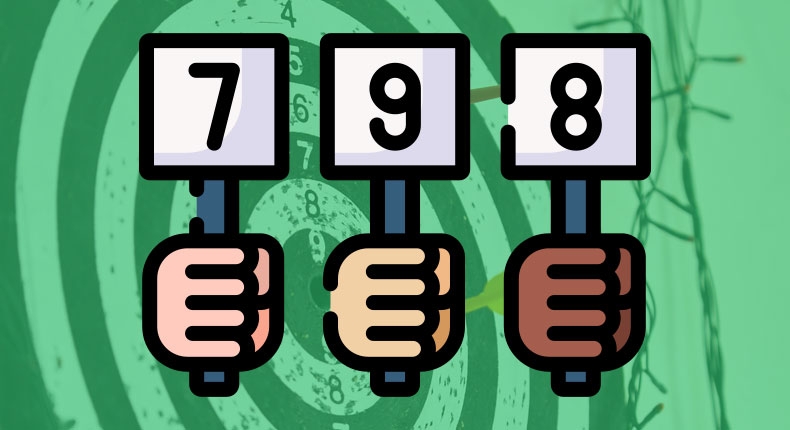In the world of PPC, you’ll often hear about Google Ads Quality Score and how it affects where your ads display in the search engine.
Your rating has a huge impact on the success of your PPC campaigns, so it’s important to maximise your potential with the best PPC practices.
How do you do that? Well, we’re here to take you through all the key points. Let’s start with the basics.
What Is Quality Score?
It’s the metric Google uses to influence ad rank and cost per click (CPC) for your ads.
The rating you have is an estimate of the quality of your ad copy, keyword, and landing page you’re linking to.
So, yes, this means the search engine giant decides on the position of each of your ads. How? Well, it uses calculations to determine your bid and your Quality Score.
This means you should be aiming for the best possible score you can get. Your ad will be in a strong position if you have a high rating, which can lead to a better click through rate (CTR).
It all sounds simple, but with a mass of competitors out there it’s a tough battle you need to be well prepared for.
And because Google is the search engine giant you want to impress, it’s essential to make sure your ads are high-quality and match people’s search queries. Relevancy is a big deal.
Google is a business, after all, and it wants to provide the best quality ads (and content) to people using its product.
And from the point of view of your business, Google’s rating scale dictates your potential success.
Get it wrong and it’s the difference between not entering an auction and, as a result, failing to get your ad onto the Google Search Network.
Ultimately, you should view your score as feedback on your user experience, keyword relevancy, and how your campaign is performing.
How to Check Your Quality Score
Google has a scale between 1 and 10, with 1 being poor and 10 the best.
Want to know what your rating is? Well, in your PPC account there are four status columns to look out for:
- Quality Score.
- Landing page experience.
- Ad relevance.
- Expected clickthrough rate (CTR).
There are a few steps to follow to find the values for these. You have to:
- Sign in to your Google Ads account.
- Once you’re in there, find the campaign and ad group you want to check.
- Select the Keywords tab.
- Finally, click on the Status column next to any term you’re using. This’ll reveal the Keyword Analysis field – there you’ll see your rating.
Remember, the ratings fluctuate over time. So, it’s important to keep a regular check on how well your campaigns are doing.
How Does Google Calculate Your Quality Score?
Google calculates your rating every time someone performs a search that brings up one of your ads.
It uses three factors to determine where you end up on its scoring scale:
- Expected CTR: This is Google’s estimation on the rate at which your ad’s viewers will click on it. The search engine giant considers your campaign history to work out this rating.
- Ad relevance: How close the connection is between the keywords and your ad copy. The higher the relevance, the better you’ll appear on the ratings scale.
- Landing page experience: How well the target page on your site provides people with what they’re looking for.
So, the long-term statistics of your account (as in the keywords and ads you use) determine where you rank.
What Is A Good Quality Score In Google Ads?
This depends on the keywords you’re looking at. There are three sets of ratings to aim for. These are:
- Branded: Aim for between 8 and 10.
- High-intent commercial: Aim for between 7 and 9.
- Low-intent commercial: Aim for at least 7.
If you’re nearing the lower end of Google’s scoring scale then it’s time to take action and improve the situation. From 1-5, you can consider that a bad rating.
The Reasons For a Bad Quality Score
Okay, so how and why can you end up at the lower end of Google’s scale? You may put a lot of effort into your campaign, only to see no reward for your actions.
There are some common reasons for this. Some are within your control, others aren’t. These include:
- Your CTR is poor: If you have a poor CTR for certain keywords, this suggests to Google you’re not matching search query requirements. This can not only cost you money over the long-term, you’ll also get a bad rating.
- Lack of relevancy: If you don’t organise your campaigns very well, they can become cluttered and this leads to a poor score.
- Using all short-tail keywords: If you rely on these (such as “blue socks”) then your CTR will stay below 2%. Long-tail varieties are more effective, such as using “high-quality blue cashmere socks”.
- Low quality landing page: If someone clicks your ad and finds themselves on a poor quality landing page, this can lead to a high bounce rate. In short, the person doesn’t satisfy their search query, which is a bad sign for Google.
- Your historical performance: If you have a long-term history of poor content or keywords lacking relevancy, this will affect your rating. You’ll need to consistently maintain higher standards to improve your situation.
- Click fraud: This is becoming more and more common, with bots designed to sabotage your campaigns. PPC click fraud targets your business’ marketing budget and attempts to drive up your costs. You also get a lot of traffic arriving at your landing page that, ultimately, bounces—this suggests to Google your campaign isn’t relevant.
After identifying you’re having issues, the important next step is to take action to rectify the situation. How do you do that? Read on below.
How to Improve Quality Score In Google Ads
In the long-term, improving your rating can help to increase your PPC profits and the position of your website in the search engine.
And now you’re probably thinking, “What do I do with a low Quality Score in Google Ads?” Well, here are the steps you can use to maximise your potential.
Understand What Affects Your Score
The more you know about the way Google Ads operates, the better your chances of getting nearer to the top of its scoring scale.
Spend some time reading into the ideal campaign and the various factors that affect your score.
You can check out our 100 PPC terms and acronyms to get you on the right path.
But remember there isn’t a one fix cure-all. To improve your rating you’ll need a variety of campaign assets working in tandem.
And you’ll need to maintain high standards over the long-term to get the main benefits.
Find Improvements By Targeting Ad Groups
You should look to design your ad groups into highly targeted campaigns. Why? It ups the importance between searching and your ad.
In short, each group of ads you have needs relevant keywords. And relevancy is the big issue here, as it has a big impact on your eventual score.
So, work out which keywords you need by focussing in on ad groups and the keywords that’ll do the job.
Need help there? Have a look at this list of the very best PPC tools to dig a little deeper and reap the rewards.
Research More About Your Keywords
With millions of keywords out there, it’s good PPC practice to gain an understanding of the various combinations a searcher may type into Google to make your ad appear.
Extra research you perform will provide key information such as:
- The various combinations searchers use.
- How important these are to searchers.
- The opportunities you have to bring more traffic to your landing page.
Write Better Quality PPC Ads
As you only have a short amount of time to catch the attention of a searcher, your ad copy has to count.
Your copy needs to be high-quality.
But what is a world-class PPC ad? One that focuses on one product or service and clearly explains what you’re doing and how you’ll satisfy the search query.
Keep your ad neat and tidy, while maximising your keywords within the character limits you have. This will go a long way to improving your rating.
Need some tips? Take a look at these advanced PPC ad examples for inspiration.
Improve The Quality of Your Landing Page
As this is the page searchers will arrive at, it needs to be fully optimised for your campaign and ready to get the job done. Make sure it’s:
- Mobile-friendly.
- Has a strong page loading speed.
- Uses relevant keywords across the landing page copy.
It should also feature relevant CTAs and a fluid user experience so the searcher can complete their goals with ease.
Try Out Expanded Text Ads
Want to use more copy? This feature is a good option. With 50% extra characters to play around with, you can improve the relevancy and targeting of your PPC ads.
With this option, you can:
- Add a third headline to the ad.
- Use a second description.
- Take advantage of 90 characters for every description.
The big benefit here is you can use more long-tail keywords. This feature is available on Google Search Network and Google Display Network.
Avoid Dynamic Keyword Insertion (DKI)
Some businesses can benefit from this feature in Google AdWords, but DKI isn’t advisable if you’re looking to improve your rating.
This is because it can make your ad copy poor, which can cause searchers to avoid your ad and move elsewhere.
Again, to improve your rating you need to maximise your overall quality to move up Google’s ratings scale.
Stop Click Fraud
And finally, there’s the unfortunate reality some of your competitors (or other malicious online users) may attempt to damage your campaigns.
Stopping click fraud should be a top priority for any business. To do this, you should:
- Perform competitor research for similar campaigns.
- Limit your exposure where possible.
- Monitor your campaigns carefully for signs of malicious behaviour.
- Invest in click fraud prevention software.
This is a $25 billion industry problem. The good news? There are already industry-leading solutions available.
This is where we come in. Our PPC cybersecurity prevents click fraud through automated and hyper scalable features.
It’s all designed to block only the bad traffic, so your Quality Score is left to increase naturally over time.
Your Key Takeaways for a Healthy PPC Campaign
Ultimately, planning and ongoing organisation are a big part of a successful PPC campaign.
If you carefully handle those stages of your strategy, then you have every chance of maintaining a high rating in the digital eyes of Google.
However, for the more sinister issues that may be affecting your Quality Score, you can turn to trusted sources to solve your issues and keep your rating high.
Stop Your Click Fraud Issues Today
At Lunio, we’ll increase your campaign performance by up to 30%. How? We target, and eliminate, click fraud and invalid traffic.
With our product, you’ll save time and money—it’s the world’s most advanced click fraud prevention technology for paid media campaigns.
Want to sign-up to our proactive protection and prevention system? Check out our click fraud prevention pricing packages, starting from as little as £49 a month.
Or book a Lunio demo right now to see for yourself. You can also contact our team on 01204 235 288 with any questions.





